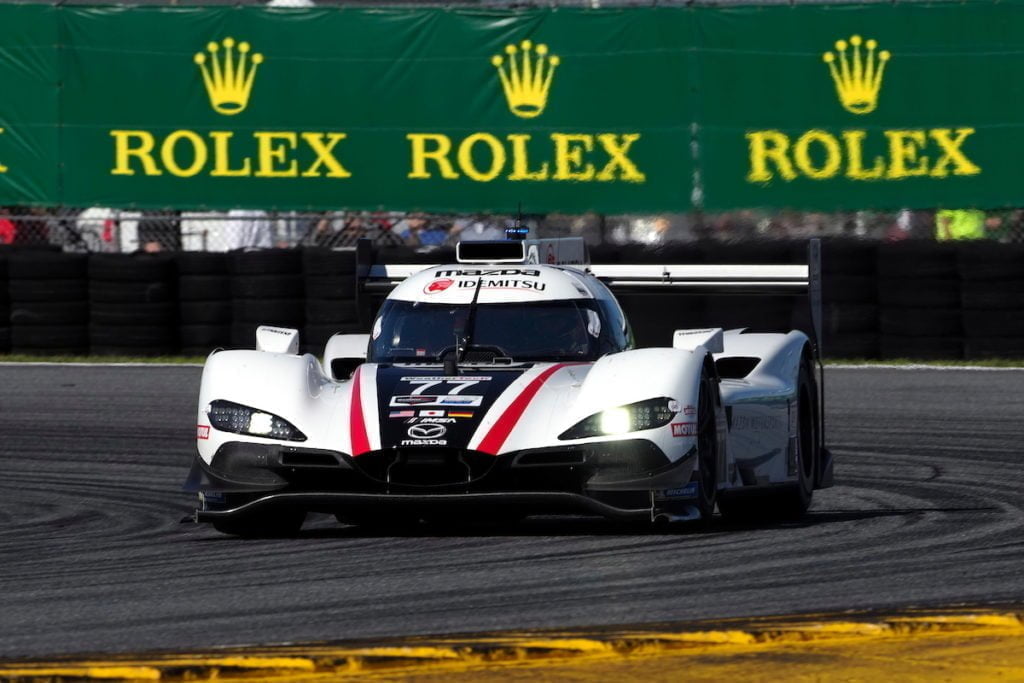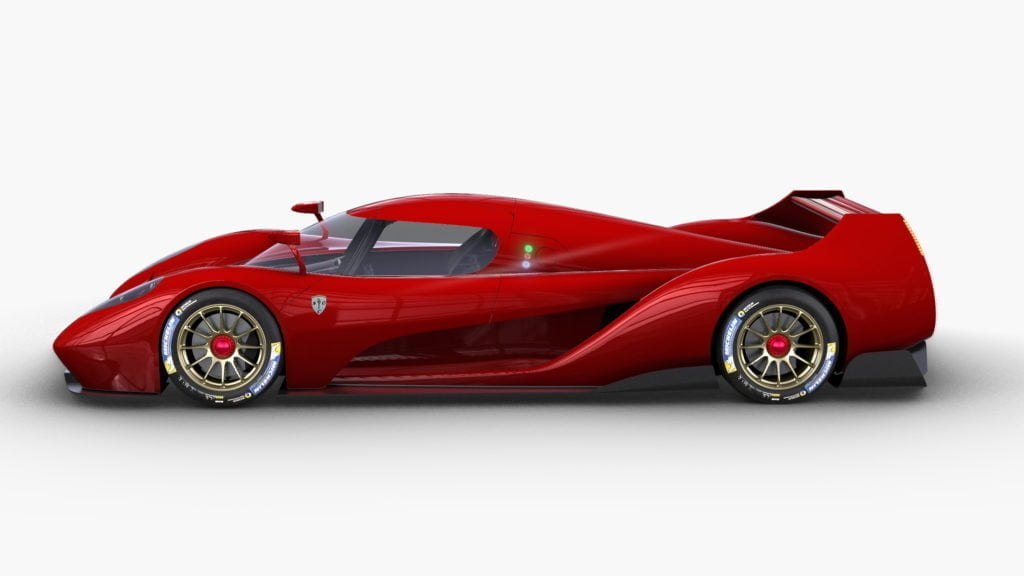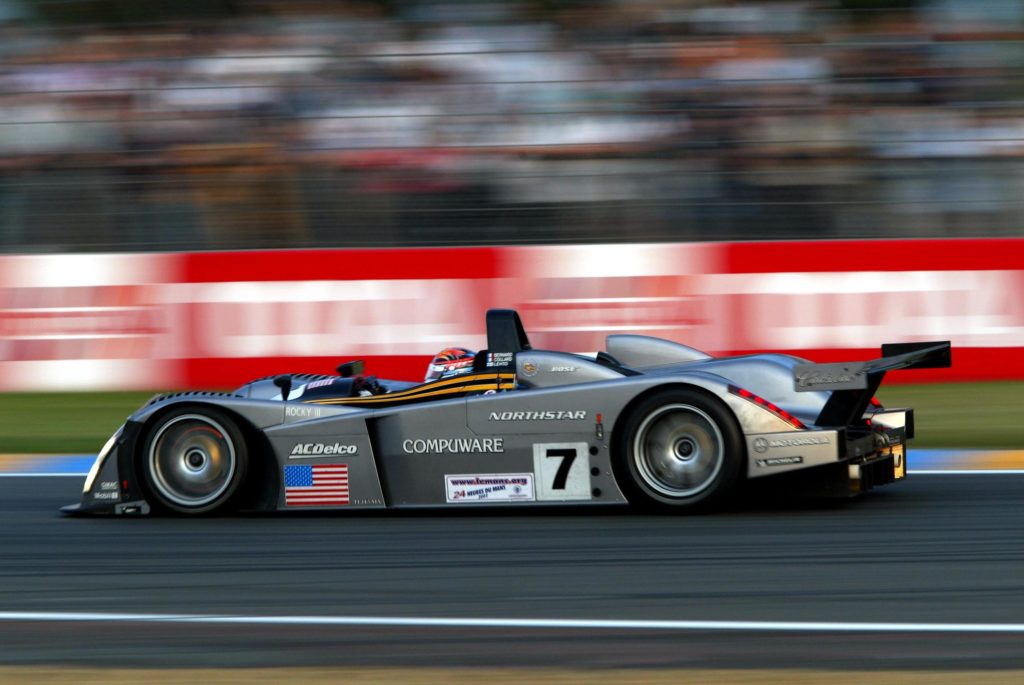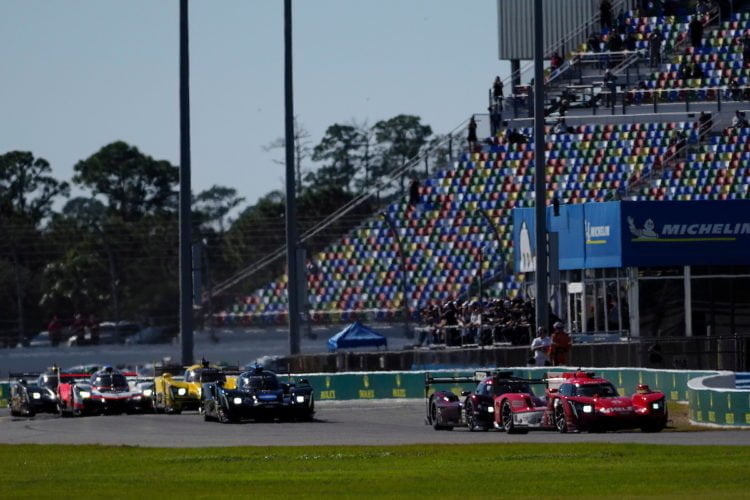The Automobile Club de l’Ouest and IMSA captured the attention of the sportscar racing world on Thursday when they released the draft technical regulations for the new LMDh category ahead of its projected 2022 racing debut. But what is actually in these regulations? What questions are there still to be answered? Motorsport Week takes a look.
Of course, it should be noted that these regulations are not final. They are draft regulations, the result of months of collaboration between the ACO, IMSA and what it says are ‘dozens’ of automotive manufacturers and the nominated chassis constructors in Ligier, Dallara, ORECA and Multimatic.
That being said, there are some interesting things in these new regulations that are worth taking a look at.
For starters, it is very clear that the name of the game for LMDh is cost-capping. The press release put out by the parties involved specifically states that LMDh machinery will be cost-capped. This is mostly a confirmation from what we already knew: LMDh will be LMP2-based and will most likely be significantly more affordable to run than a top line LMP1 or even a Le Mans Hypercar programme.
In previous months, we have already learned that this approach has put Le Mans Hypercar in something of a cumbersome spot as LMDh potentially creates a much more affordable alternative for manufacturers. The knock-on effect this has on LMH has already played out as Aston Martin pulled the plug on its Valkyrie LMH project in February, citing LMDh’s more cost-friendly alternative as the reason why.
That being said, the regulations paint a picture of how the parties involved plan to go about the cost-capping process, with a spec hybrid system and a clear basis in next-gen LMP2 machinery.
It’s also clear from these regulations that a lot of inspirations has been taken from IMSA’s current Daytona Prototype International (DPi)-based approach to a top prototype class. Current DPi cars from Mazda, Cadillac and Acura are based on LMP2 machinery (Multimatic, Dallara and ORECA respectively), are styled to resemble the respective manufacturers’ road car products, and each are powered by the manufacturers’ own engines.
This has also made its way into LMDh’s regulations, as cars run in the LMDh category will feature a manufacturer brander and stylized bodywork and a manufacturer branded engine. As part of the performance of the cars, the regulations do feature one bodywork package with identical aerodynamic performance. This indicates that while manufacturers have the freedom to design the cars to resemble their roadgoing counterparts, the aero and bodywork will have to meet with performance regulations.

Continuing on the topic of performance regulations, the cars will have a minimum weight limit of 1030 kg and a max combined power output of 500 kW, or 670 hp. This does seem to create a gap between the power output for LMDh and LMH. Take Glickenhaus’ 007 Hypercar, for example. Glickenhaus recently announced a partnership with Pipo Moteurs to build a twin-turbocharged V8 for its Hypercar project.
The engine is expected to produce around 870 horsepower, which already goes significantly above what these regulations. The team confirmed to Motorsport Week last week that they intend to sell the engine to teams in LMDh configuration, which mean it would in all likelyhood have to be downtuned.
Another important line from the new regulations is ‘only mainstream automotive manufacturers (associated with one of the four chassis constructors) can homologate a LMDh car.’ What this appears to mean is that major manufacturers essentially have two options when picking a route into LMDh. They either have the choice to build and homologate their own car, or go with an established LMP2-based approach. This could lower the bar for entry for manufacturers and could be a very positive way of going about things. It does, however, raise some questions. Because what qualifies as a ‘mainstream automotive manufacturer’?

This wording also comes back in the matter of racing Le Mans Hypercars in IMSA races. The release states that IMSA races will be open to LMDh cars, while the series will also be ‘open to LMH participation from mainstream automotive manufacturers once performance at IMSA circuits can be further validated.’ Where does the threshold for that lie? Take Glickenhaus as an example again. The company does build and sell roadgoing cars, but it could be argued that they aren’t exactly a mainstream manufacturer. Would they be able to take part on home soil with their 007 Hypercar?
The wording that IMSA competition will be open to mainstream manufacturers for LMH after evaluation seems to suggest IMSA is banking more on LMDh, and that it is using LMH as a possible backup plan in case there’s shortage of manufacturers.
Apart from the questions the new regulations throw up, there’s also quite a bit it confirms. It confirms further convergence between LMH and LMDh. And perhaps even more importantly, it confirms that LMDh and LMH will race side-by-side in the FIA World Endurance Championship, which creates the possibility of a whole host of new manufacturers fighting for the top crown at the 24 Hours of Le Mans.

It’s pretty clear that there are still a fair few questions to be answered, but there is still time. After all, these aren’t the final regulations. Those are expected to be presented near or at Le Mans weekend. It is still the target to introduce LMDh for the start of the 2022 season for both IMSA and the WEC, which now line up thanks to WEC’s recently confirmed calendar reshuffle.
The series do make it very clear that 2022 is still the target, but not the deadline and could be delayed further if deemed necessary in light of the COVID-19 pandemic.
Despite the questions, it is clear that these new regulations are another major step in the direction of a new era for international endurance racing. ACO, IMSA and the other parties involved do deserve credit for continue their work on these regulations in these unprecedented times.
Porsche’s almost immediate response to confirm that they’re looking into a possible entry will probably not be the last, and let’s hope for the sport’s sake that many more manufacturers follow.
One final question though: when will they clarify what the ‘h’ in LMDh actually stands for?




![Lando Norris and Oscar Piastri [McLaren] celebrate their 1-2 finish at the 2025 F1 Austrian GP](https://www.motorsportweek.com/wp-content/uploads/2025/06/Lando-Norris-Oscar-Piastri-McLaren-F1-2025-1-350x250.webp)




![Lando Norris and Oscar Piastri [McLaren] celebrate their 1-2 finish at the 2025 F1 Austrian GP](https://www.motorsportweek.com/wp-content/uploads/2025/06/Lando-Norris-Oscar-Piastri-McLaren-F1-2025-1-120x86.webp)